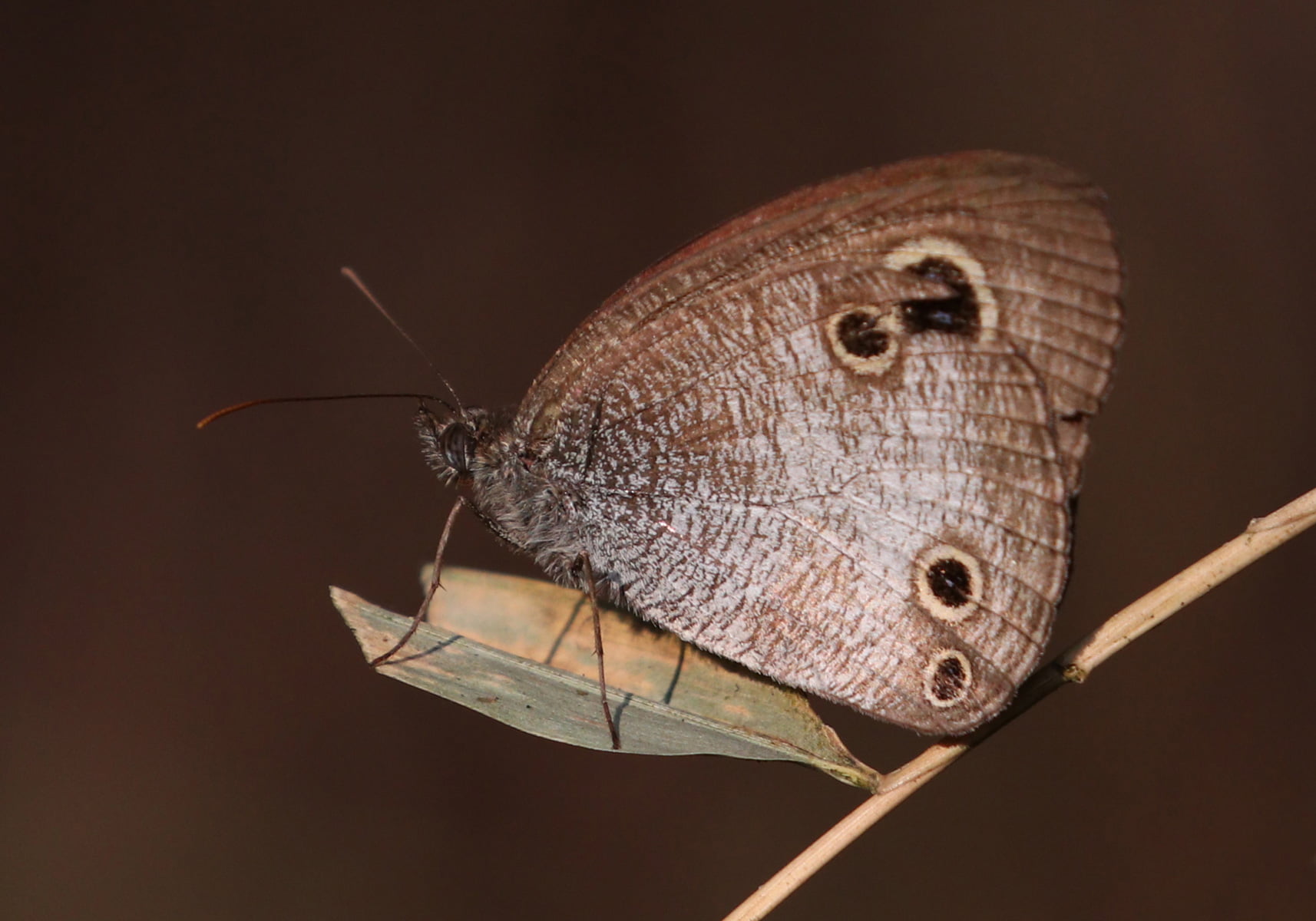Ypthima pandocus has a grayish brown upper wing in the subapical area, there is a large ocelli, the pupil is double and has a yellow ring. On the hind wings there are two yellow ringed ocelli in spaces 1b and 2. Male butterflies have gray-black sex markings in the distal area of the forewings. The underside of the wings is pale grayish to brown with dark brown fine lines. In the subapical area of the forewing there are double-pupiled, yellow-ringed ocelli. The hindwing has three yellow-ringed ocelli in chambers 1b, 2 and 6. The ocelli in space 1b are double-pupiled.
Larva: larvae of Ypthima pandocus have a yellowish body, pinkish lateral and posterior parts. Initial body length is 2.5 mm, covered with long rows of setae in the lateral and lateral dorso areas. The head is yellowish brown with a pair of short, round horns.
Pupa: Ypthima pandocus pupae are brown or green in color, slightly angled in shape, about 12-13 mm long.


